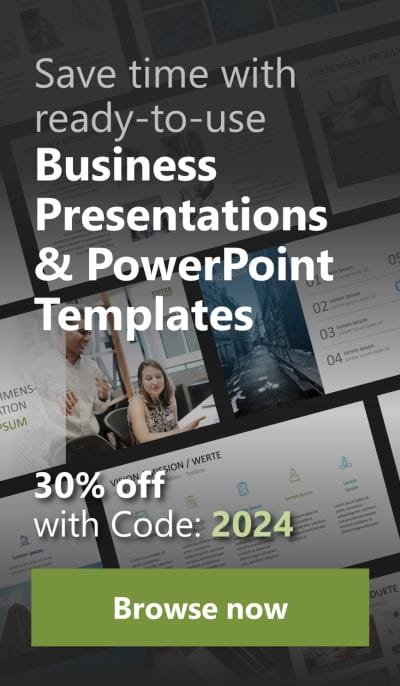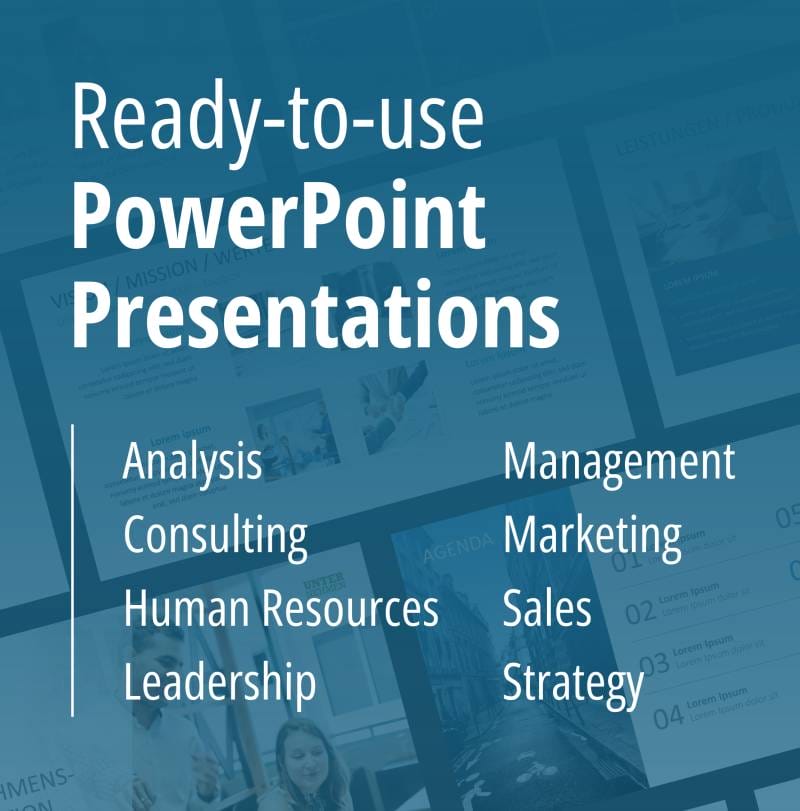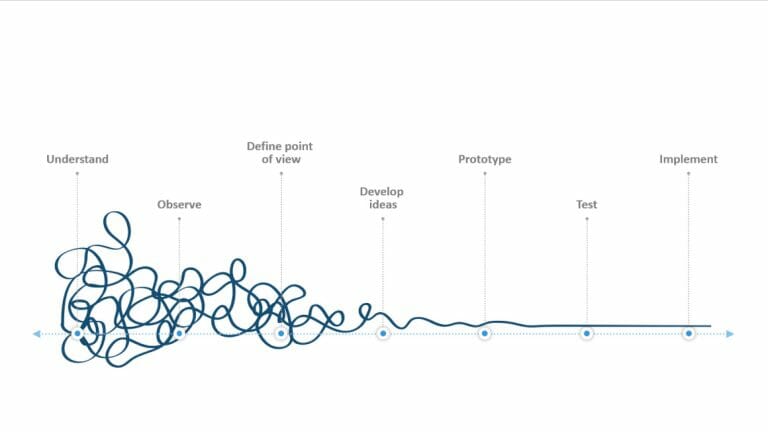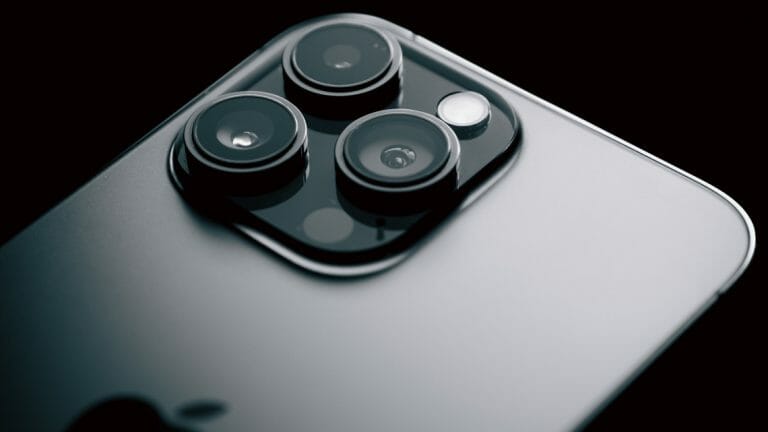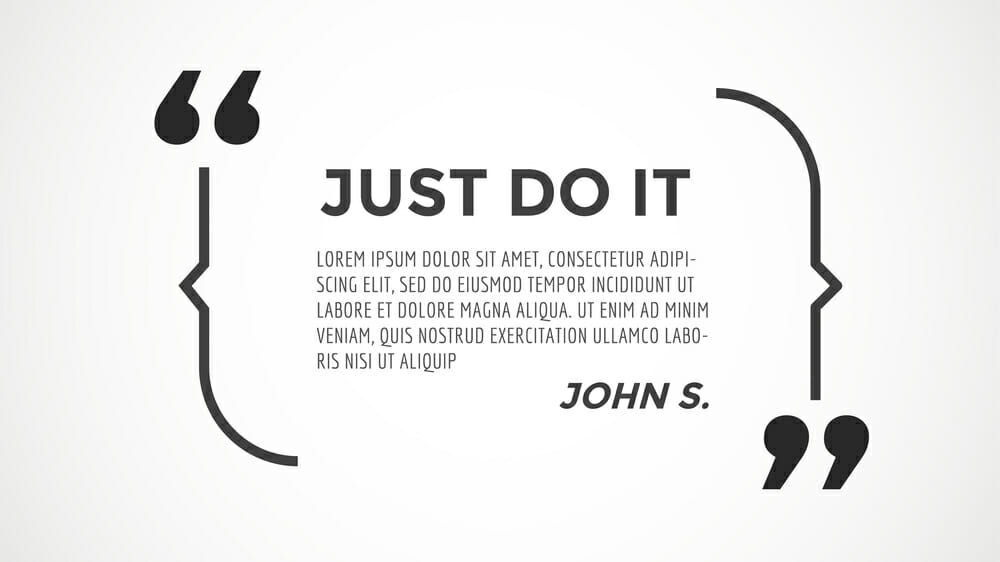
PowerPoint Quotes: Effectively Harnessing Quotes in Presentations to Make an Impact with Words
Have you ever wondered why all great speakers use quotes? Quotes are versatile. They add a touch of flair to speeches, enhance the credibility of the message, stimulate the mind, establish a connection with the audience, and much more. Incorporate PowerPoint quotes into your presentations as well!
When placed strategically and thoughtfully, quotes can be invaluable for your presentation. Today, we will show you why and how to skillfully integrate the technique of “PowerPoint Quotes” into your PowerPoint presentation.
With motivation comes success
All you need is a goal, a quote, and a love for your presentation topic. It’s not just about delivering a presentation and feeling relieved when it’s over. Anyone can do that. You want to leave something with your audience – not just a positive impression, but to convince, inspire, fascinate, and above all, motivate.
Whether it’s prompting your audience to purchase your product, book a service, or increase attendance for your seminars and exhibitions, words have incredible power. Once you are aware of this, you have already taken the first step towards delivering a compelling presentation.
Finding the right words
Quotes have the allure of being special. They make us admire others for their wise words, provoke thought, motivate us, become company philosophies for startups and businesses, or simply make us smile. Harness this impact for your presentation and emphasize important ideas with impactful words.
The art of PowerPoint quotes and the benefits of using them
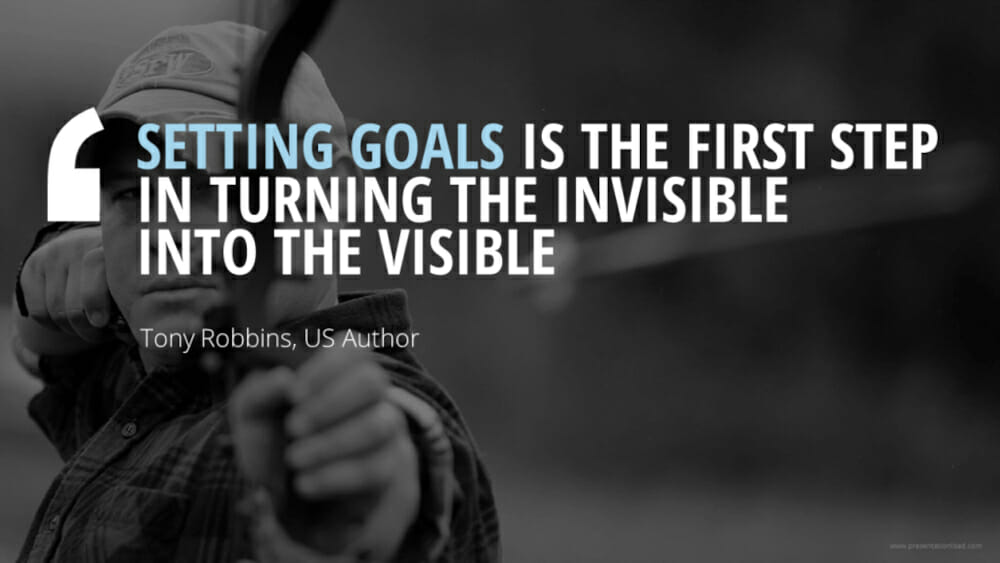
You can leverage the following advantages when using a PowerPoint quote:
- Reinforce your statements: Quotes serve as a second voice in your presentation, validating your theses and ideas. A quote can be impactful either because the author carries a certain authority or because the quote itself is highly meaningful. A seemingly simple statement from a person with an authoritative character sheds new light on the matter.
- Enhance your credibility: Be the expert in your field and demonstrate that you are always up-to-date through thorough research. Quoting other experts and acknowledging their work shows that you are extensively prepared and knowledgeable about your research field.
- Establish a personal connection with the audience: Quotes, with their unique effect, bridge the gap between the audience and the speaker, putting them on the same level.
- Stimulate the minds of the listeners: Inspirational quotes can generate new ideas to solve problems or reinvigorate old projects. Consider incorporating quotes into your brainstorming sessions as well.
- Inspiration: Regardless of what you are presenting, your goal should always be to inspire your audience and spark interest in new ideas, plans, or products. And what better way to achieve that than by emphasizing your statements with a memorable quote? It’s the perfect finishing touch to your presentation. • Add variety to your slides and speech: It’s no secret that long, complex, information-heavy presentations can be tiring. Therefore, incorporate quotes to wake up your listeners before it becomes too dry!
- Summarize: Certain quotes can serve as a summary of your theses and thoughts on a topic. Use a quote to bring your statements back to a central idea and reinforce what you have said
- Structure: Separate chapters, for example, the beginning or end of a topic
- Leave a lasting impression: Quotations help people remember your presentation because they are often precise and presented in a memorable format. (After all, that was the reason you chose to use quotes, right?)
A good quote clarifies and elaborates on an idea or thought and provides inspiration. Quotes motivate the audience to join you because the power of ideas, when elegantly and memorably expressed, can have a significant impact on listeners.
For example, Leo Widrich, co-founder of Buffer, began promoting his products by telling stories, which led to a significant increase in sales. Scientific research also confirms that stories, poems, and quotes have a unique effect on the audience. You can read more about this in the next paragraph.
Why PowerPoint quotes help you and how the brain processes them
To understand why quotes are beneficial, it helps to examine the audience’s reaction more closely. PowerPoint presentations that contain numerous and complex pieces of information activate two parts of the brain: the Broca’s area and the Wernicke’s region. These parts of the brain process language and decode the meaning of words. Therefore, in such an informative presentation, the brain undergoes a pure decoding process.
However, when we hear stories, our brains react differently and in a much more extensive manner. When this happens, not only do the language regions of our brains become active, but also the parts we use when we experience events ourselves. Leo Widrich explains that “when someone tells us about the delicious taste of certain foods, our sensory cortex is activated. When it comes to movement, our motor cortex is activated. So, a story can activate the entire brain.”
The scent of fresh coffee in the morning or the softness of the sheets on our bed are stored in our brains. Therefore, when someone tells a story, our brains want to link the information with similar experiences that are already stored there. In this process, the part of the brain called the insular cortex is activated. It helps us relate what is being told to things we have already experienced in the past, such as feelings of joy, pain, or success.
As our brains automatically make connections with stored experiences, stories, metaphors, images, and quotes can have a particularly significant effect. By using them, the brain becomes actively involved in the presentation. So, if you incorporate a memorable quote along with a relevant image into a presentation, your audience will automatically establish a connection with what is being said that goes beyond mere information absorption.
Read our article on storytelling here.
Which quotes are suitable as PowerPoint quotes
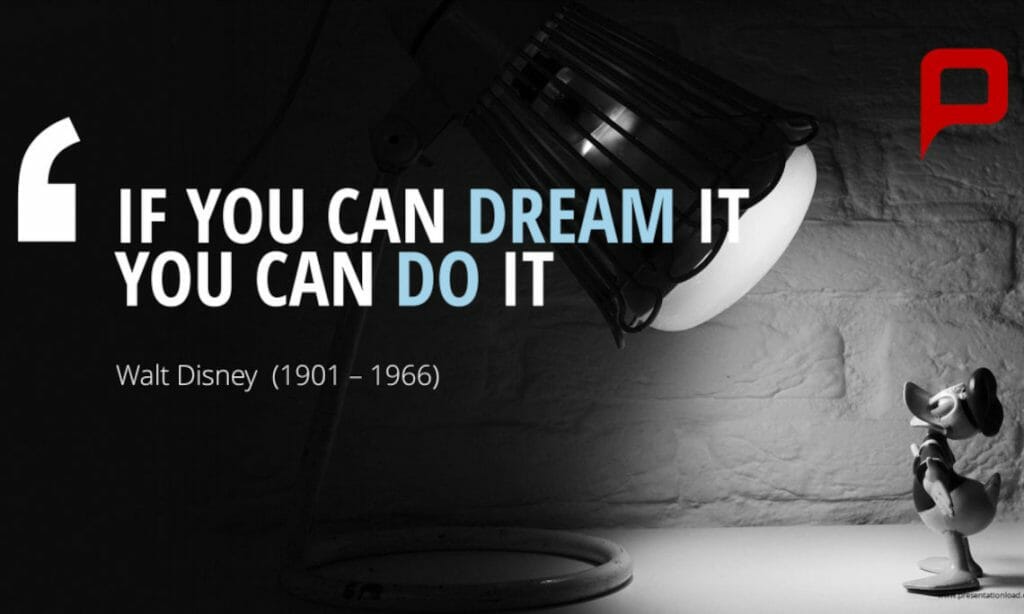
Sometimes you come across a sentence in a book that you really like, or you are inspired by quotes from famous individuals such as athletes, politicians, artists, or philosophers – it doesn’t matter where you find them, what matters is that you find thematically relevant words.
Always remember to entertain your audience to some extent. However, don’t overdo it, as the right quote chosen at the right time can be invaluable. One or at most two quotes in the presentation are sufficient. Too much of a good thing always has a detrimental effect. Use quotes sparingly. Therefore, do not make a mistake and take enough time to research the quote beforehand. A carefully chosen, good quote is better than ten randomly selected PowerPoint quotes.
When is the right time for powerpoint quotes?
When to use PowerPoint quotes depends on the context and flow of your presentation. Here are a few suggestions:
- Starting your presentation with a quote can have a powerful impact and help capture your audience’s attention right from the beginning (we all know how important the opening of a speech is). However, be cautious about the type of quotes you use and ensure they are relevant and impactful. Beginning your presentation with a PowerPoint quote is a classic approach. Ideally, choose a quote that introduces your topic and resonates with you as a speaker, making an immediate connection with your audience.
For example, you can start with the quote:
“Words may inspire, but actions create change.”
Simon Sinek
- Incorporating quotes in the middle part of your presentation can be particularly useful as they can reinforce and support your arguments. Introduce quotes after discussing specific sections or topics to provide closure. Including a quote in the middle adds variety and makes your presentation more digestible.
“Don’t worry about failures, you only have to be right once.”
Drew Houston
- Take a break and let your audience read the quote themselves. Use quotes strategically to your advantage, especially if they are visually presented with images or other elements. As you shouldn’t be reading directly from your slides, this gives you a moment to pause and breathe before continuing.
“Taking a break is the most underestimated productivity factor”
K. Wolf
Remember to be creative and have fun while presenting your quote. However, ensure that PowerPoint quotes align with your topic. Randomly selected quotes can disrupt the flow of your presentation and confuse your audience. Spark interest and bring humor to your presentation, but always keep your main topic in mind.
Note: When to avoid PowerPoint quotes
Avoid ending your presentation with a quote. Trust your own words to provide a strong conclusion. Ending with someone else’s words can convey a sense of uncertainty and lack of confidence. While it is possible to incorporate a quote near the end of your presentation, especially if it summarizes the content or ties back to the beginning, always make sure that the final words are your own. Remember, you want to leave a lasting impression with the conclusion of your presentation.
What else you need to consider when using PowerPoint quotes
A quote represents the intellectual property of another person, and just like with images, it is essential to give credit to the author. Include the source immediately after the quote. For example:
“The secret of getting ahead is getting started.”
Mark Twain
Extra tip: Quote slides from PresentationLoad
Feel free to use our professionally designed quote slides for your presentation. We offer a wide selection of quotes from various (business) areas that can help you make a convincing impact. Take a look around ► To the shop
Conclusion: Use PowerPoint quotes in moderation for maximum success
Embrace the many benefits they bring to your presentations, but be mindful not to overload your slides with quotes. Take the time to carefully select and incorporate quotes into your preparation. With a fitting, impactful, and well-placed quote, you’re sure to impress your audience!
If you need help finding a PowerPoint quote or have any other PowerPoint-related questions, feel free to contact us at [email protected]. We’re here to assist you!
You are looking for professionally designed slide templates? Then check out our shop. We have numerous slides ready for download on a wide range of (business) topics. Visit our shop today! ►Go to the shop
You may also find these articles interesting:




